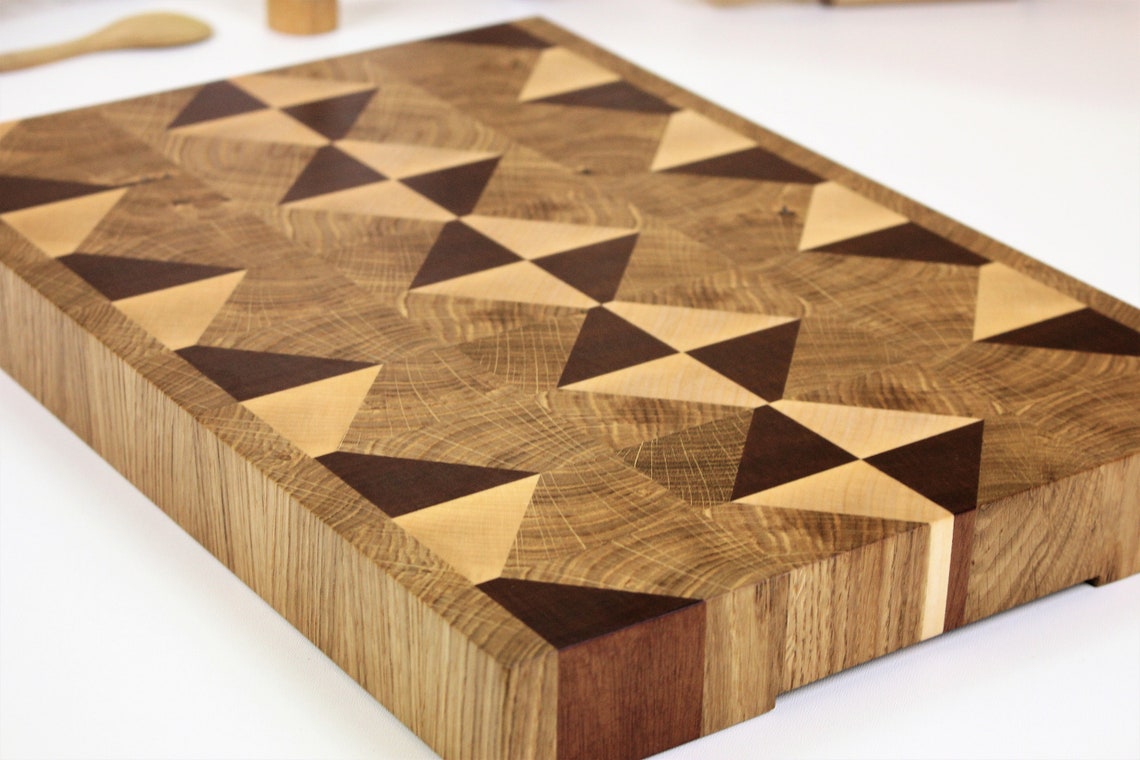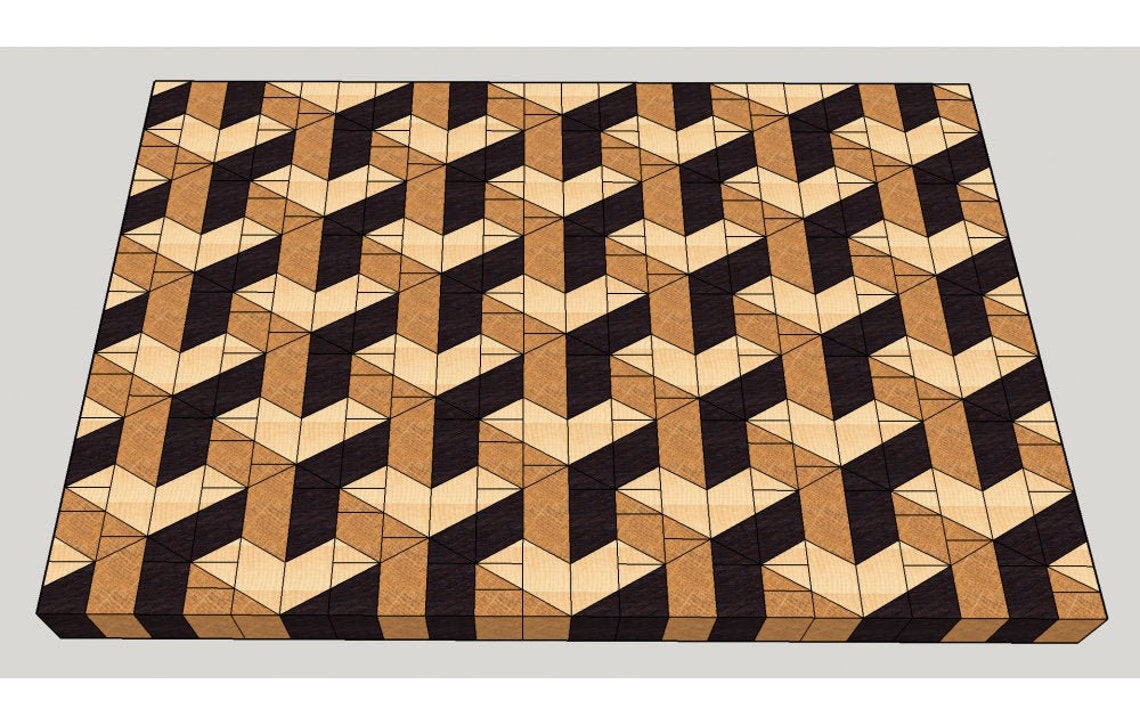


Before you cut down the rough sized lumber you need to get a true edge and face. This is probably very basic for some of you, however, for beginners this step is worth mentioning. I like to leave at least 1/8″ to 3/16″ of inch extra so I have plenty of wiggle room. When you rough size the material be sure to leave extra for planing and finishing. The material I used for the board was cut down from 8/4 material so I used my bandsaw to split the boards in half and make them thinner. This can be down with a table saw and/or bandsaw. The first step in building the basket weave cutting board is cutting material down to a rough size. In order to accomplish that you really need to take your time and use the proper tools in the proper sequence. Trim the edges at the cutlines using a track saw or a circular saw guided by a straightedge.The key to successfully building a basket weave cutting board is making sure that you have very precise cuts so the “puzzle” fits together with perfect joints.

Line up a framing square with the edges of the cutting board and mark perpendicular cutlines on all four edges. The sled has a slot that allows the router bit to slide back and forth, and rails to corral the router base. The jig has two parts: a plywood base with a pair of parallel rails a bit wider than the board’s thickness, and a sled long enough to slide on the rails. As its name implies, this workbench-size jig flattens uneven wood surfaces. Put the board back in the flattening jig and run the bit lightly over both faces again, or sand them with a belt sander and 120-grit sandpaper. Mix wood glue into the sawdust created by the flattening process, then use this paste to fill any gaps in the board surface, as shown. When the glue is dry, remove the clamps and use either a belt sander or a slab-flattening router jig (see Tip) to flatten both board faces. Steps for building a 3D cube cutting board Tom had such a good time making this one, he went ahead and made two of them: one for his son and one for his daughter. As with any board in which the grain runs vertically, “a knife does less damage to the wood than on a flat-grain board,” Tom says.Ĭutting boards make great gifts. When assembled into a board, they fool the eye into seeing three dimensions. Tom and Kevin cut and glued together wood strips into identical rhombus shapes, then sliced them into six-sided pucks.

Three woods of contrasting colors give the board its intriguing appearance: maple, oak, and cherry sourced from a hardwood lumber dealer. You can get it, eventually, with a metal protractor, a bevel gauge, and test cuts, or quickly with a magnetic digital angle finder like the S&F Stead & Fast ($24 ). In this project, the table-saw blade has to set at exactly 60 degrees, but you can’t rely on the saw’s bevel-angle adjustment to provide the needed accuracy.


 0 kommentar(er)
0 kommentar(er)
